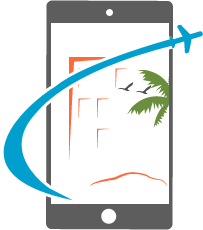Top 10 things to do while designing travel agency’s website.
APRIL 03, 2019
Everyone loves to travel. Nowadays the number of travellers have increased tremendously. While initial thought of journey arise in the mind, many tend to get more information from the online sources. They search for the destinations, best deals, flight bookings, hotel reservations and best time for travel.
The traditional model of making personal visit to any of the travel agency and placing the booking, have totally changed. All the bookings happen online. Hence, your travel portal should be technologically advanced to meet the needs and preferences of your client.
If you are a travel agent and you plan to develop a new travel software or website for your company, make a note of the below mentioned factors. For those who own their own websites, you might be wondering why you are losing business? For all your queries, we are providing 10 important facts to consider before you design your travel website. If these factors are followed you can gain reach and thereby your business develops.
1. Responsive Design
The website should be developed on responsive design platform. This enables your website to perform well on mobile devices too.
Every time customers won’t browse on desktop and make their bookings. Therefore, it’s very important to provide them with the best user experience while they sign-in to your website using tablets or mobile phones.
2. SEM Benefits
Search Engine Marketing (SEM) is very vital to ensure top ranking of your website in the search engine. Google Adwords and Keywords adds-on to this scenario. A professional web development company’s help is advisable to gain visibility in organic as well as advertisement links on any search engine.
3. Proper Placement of Call-to-Action Buttons
The purpose of your website is to generate travel business leads. In that case, it is very important that you place call-to-action buttons in the proper space.
Here certain psychological factors are also to be considered. Behavioral psychology will enable your website to choose and create meaningful typography, layouts and colors.

4. Content Management
Content Management is another major factor to be considered. A lot of contents arranged in a messy way will never generate business from your website. The contents should be short and apt for the context. Infographics and images can give more look and feel to your travel website design.
5. Boost Offers and Deals
Your web design should showcase the best deals or offers to initiate traffic. Many people plan their travel while they get good offers for flight tickets.
Some travellers even prefer travelling during the off season to save their money. So a way to make a proper plan on managing the deals and season should be integrated within the website to evoke interest in website visitors.
6. Integration of Online Chat/ Call Services
24x7 customer support is required if you plan to run a website for your travel agency. If you have clients from all around the world, then online support should be organized on the basis of geographical locations.
7. Search
Instant flight search feature has to be embedded in your website. This helps the visitor to get the required information by entering fields in the available search form. Date, time of travel, location all these are mandatory fields to be included in the form.
8. Location Based Services
Customized services based on location can generate more clients for your business. For that you need to integrate other service providers to your website. Car rental, hotel reservation etc. based on destination helps the traveller to make bookings prior to their arrival.

9. Partnership with Service Providers
Partnership with local and international service providers will always end up in gaining more customers for your travel agency. All range of bookings starting from budget travel options to 7 star reservations can be included in your list of services.
10. Integration of Website Translator
If the aim of your business is to gain a global presence then the website translator has to be embedded within the website design. Though English is a global language, people from many parts of the world won’t be able to read and understand the content on your website. To avoid this difficulty, website translator must be a part of the website.




















